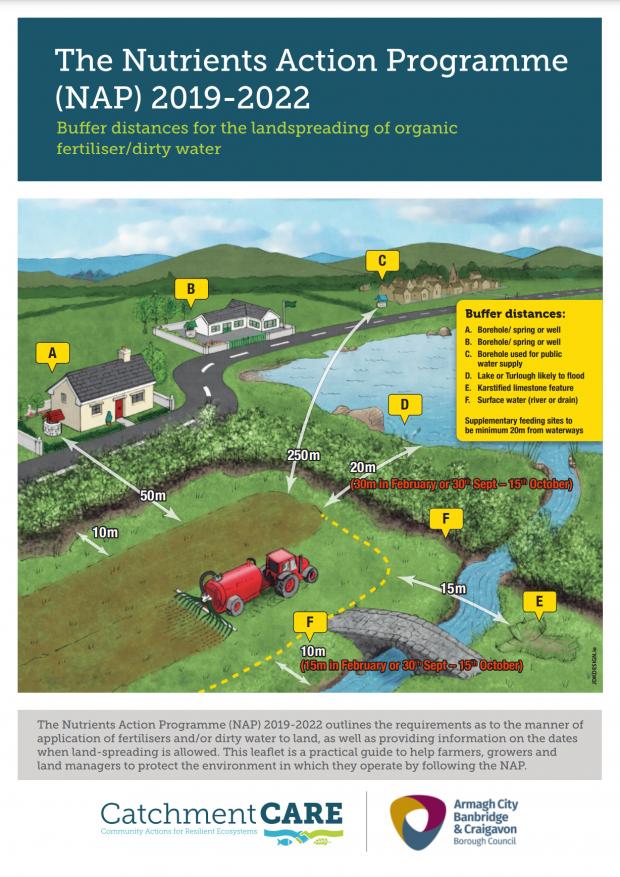What should agricultural practices look like?
The Nutrient Action Programme (NAP) aims to reduce impact on water quality by detailing information on land spreading.

What to look out for
Things to look out for and how to report issues:
- No slurry spreading within:
- 10m of a river or drain
- 25m of a lake
- 50m of a borehole, well or spring
- 250m of a public drinking water source.
- Supplementary feeding sites to be a minimum of 20m from waterways.

- Cloudy milky water in river or lakes in area of agriculture.
- If you see manure piled close to a waterway (within 10m).
- If you see slurry spreading from midnight October 15 to midnight on January 31 (closed spreading period).
- Slurry spreading is not permitted if the ground is frozen, water-logged or heavy rain is forecast in the next 48 hours.
Silage bales must be stored at least 10m from any waterway and stored and managed in such a way as to prevent seepage into the waterway.
Should you witness breaches of any of these regulations, report it to NIEA via the pollution hotline 0800807060.
To corroborate your report you may wish to take a photo of the issue and get an accurate location as possible – street name / what three words etc. These details can be emailed to Emergency-Pollution@daera-ni.gov.uk.
Work within the agriculture sector?
For further information and technical support visit: https://www.cafre.ac.uk/businesssupport/agriculture/environment/environment-technical-suuport
